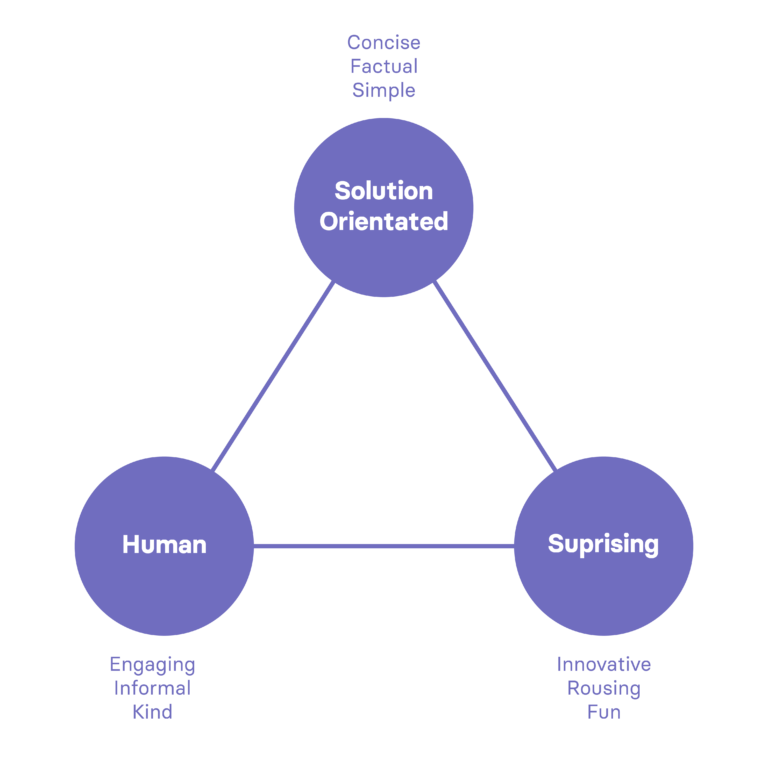Editor's note
This blog post is Part Three of a series by Kayli Vee Levitan on how to build a communications strategy for your small business. From the basics of building a brand to defining your brand personality. If you haven’t, be sure to take a look at them first.
I want to take a moment to thank Yoco for letting me ignore them. When I was asked to write this article series, it was meant to focus on helping businesses with Social Media. So far, I haven’t. Well, I have, but indirectly. Because you shouldn’t even consider Social Media, or any other platform, until you know who you are as a brand, why you exist, how you talk to your audience, and why.
In my last article, we discussed finding the central purpose of your brand and distilling it down to THE ONE WORD. Now, we’re going to build on that word to create the facets of your brand personality.
Why do we communicate in the first place?
Let’s be honest, it’s because:
- You need to sell stuff.
- You want to sell stuff.
But there’s sooooo much more to it. To sell stuff you have to be liked. To sell stuff you have to be a better option than all your competitors. To sell stuff you need to be considered first. To sell stuff you have to be memorable.
What Audiences Want.
Back to the example of the Friendly Neighbourhood Hardware Store. In our last articles, we did a whole lot of research and brainstorming. We looked at why you need to think about who you are as a brand in relation to your audiences in Strategy before Social, which resulted in the table below and The One Word that connects all the audiences. Then, we looked at how to create a brand personality because Looks Fade, but Personalities Don’t, which resulted in Communication Pillars: The DOs and DON’Ts. We’ve done so much homework, it’s time to use it to get Logically Creative.
DIY Newbies
People who don’t really know what they’re doing, but they are
inspired to get started.
- Unsure where to begin.
- Unsure who to turn to.
- Unsure who to trust.
- Find DIY intimidating.
- Life’s expensive, don’t want to waste money.
- Inspired by Social Media.
- Want to create a beautiful life.
- Etc.
DIY Pros
These are professionals. The painters, plumbers, electricians, etc. who need tools for their jobs.
- Life and paying the bills is increasingly stressful.
- Want to be valued.
- In a competitive industry, rely on word of mouth.
- They want to show off what they do for their clients, as it will get them more work.
- Want to create a beautiful life for their clients.
- Etc.
Supported through their DIY journey. Not made to feel insecure or unsure. Supported with the tools they need to create their DIY dream.
Supported in their business journey. Given the space and the tools they need to build on their dream and develop themselves and their business.
SUPPORTED

Logical Creativity
Creativity without logic is pretty nothingness. It’s a waste of time and effort because it doesn’t mean anything to the people who look at it. So, taking our needs and our audiences’ needs into consideration, let’s write a list of the sort of information they are after, so that we come up with memorable, useful, and stand out creative ideas.
DIY Newbies
People who don’t really know what they’re doing, but they are
inspired to get started.
DIY Pros
These are professionals. The painters, plumbers, electricians, etc. who need tools for their jobs.
TOPIC OF INTERESTS
- What are the various tools?
- How do the tools work?
- Basic DIY they can do themselves.
- Ways to save money when it comes to DIY.
- Where to find help if you need it.
- Inspiration.
- Etc
TOPIC OF INTERESTS
- New tools/products they haven’t seen before.
- Ways to save them money so they make more.
- Would love help getting their business out there.
- Help finding new clients.
- Ways to showcase their business.
- Etc
SUPPORTED
(PS. You’d create columns like this for all of your audience groups, not just the two I have used as an example.)
Turning the Logic into Magic.
These TOPICS OF INTEREST become your themes. These themes need to become creative ideas. These creative ideas will eventually become actual Social Media posts, emails, posters, radio ads, etc. Things get really interesting if you can find creative ways to connect the audience groups. Why? Because one post that is relevant to more than one group = effective use of your time and effort to create it. Let me give you a few examples of how we can turn these themes into ideas.
Pro Power
First off, if you as a business claim that your products are great, people might not believe you. If an outsider, especially a professional outsider who works in the industry says they’re great, then they must be! Why not connect with your DIY Pros and make them ambassadors? You get them involved in content creation, it supports their business, and they help support yours.
They can teach newbies about tools. They can showcase their latest projects that use your products. Newbies will see that it’s outsiders who are referring you, they’ll learn from them, and the Pros will get their business out there.
Newbie News
Chat to newbies. They’re the ones that are going to ask questions online and in-store. Ask them to update you with their progress. Get work-in-progress pics directly from them and share their story along with the tips you gave them and the products they used from you.
Inspo Insider
If people love finding inspiration on the internet, why not make kits for them to get it done? A Pro can explain how you create that internet sensation and a newbie can trial it. Easy peasy.
Get Organised.
These are just three ideas based on these two groups. And remember, there are so many other audience groups that we can connect and engage with. That’s Logical Creativity. Note how I have given each idea a snappy name (and I’ve done the same throughout these articles, with names like DIY Pro). This is because it makes it easier to refer to, understand, and most importantly, remember.
Now you’d sit with a calendar (I’ve given you a super simple one below) and you’d plot out the themes so you know what you are talking about, to who, and when. You will also look for key dates and occasions that you can talk about – Mother’s and Father’s Day, Christmas, New Year, Easter, International Burger Day – there are so many interesting events that you might be able to tap into, depending on your brand. Be careful though, unless you have a real connection to the event itself, you never want to simply “jump on the bandwagon” especially when it comes to the more meaningful days, like Youth Day and Freedom Day.
Once you know how often you need to post, you are going to start creating the content. Don’t just start writing. Look at the calendar you’ve created and plot what goes where. Think of the big picture before you get into the nitty gritty. You have your Communication Pillars as your tonal foundation so you know how to write them. While you want the posts to be fun and memorable, they also need to be functional, so don’t forget to add important info a potential customer would need.
Content Creation Time.
Content essentially means stuff you say. It could be a photo, text only, a video. It could also be an email, a TV ad, a blog or an article really. Having a strategist, writer and designer is the ideal way to get your content made. But if that’s not happening for you right now, there are some simple resources that you can use to make it yourself. There are others, these are just some I have used or tested personally and can recommend.
1. Content Calendar
There are a billion majillion of these online. Some are free, some paid for. All with varying levels of complexity. I made a super simple one for you to use so you can get started.
2. Canva
It’s like a mini-photoshop that lets you design beautiful posts based on templates. If you’re less creative, stick to the template and just add your info, if you have more of a creative eye, you can make them more unique. The free version is really great.
3. Unsplash
Hundreds of thousands of images that you can download and use for free. Be kind and credit the photographer.
4. Hootsuite
Hootsuite lets you schedule all your posts that you make. For one brand, it’s free! This means you can make all your content in advance and then set them to get posted on a certain date and time. It takes out the constant stress of posting, so you can focus on making sure you are replying nicely to people who message you and spend your time coming up with new ideas. Talking about time to post, do a little online Googling about when you should actually be sharing your info. There are hundreds of articles online.
5. Flaticon
This is a huge database of free icons in a variety of different styles. A really great resource for the budding creative.
6. Google
It’s important to upskill and constantly get inspired. Hang out on Social Media and follow the things your audiences are interested in. Google topics like “Best Social Media campaigns of the year”, “Most amazing social media strategies”, and “Clever social media posts” to get inspired. Look for free (or paid for) online courses and guides to upskill even more. Never stop learning and being inspired.
Get Organised.
Social Media isn’t a silo.
Remember that Social Media isn’t a silo. It’s not the be all and end all. You have a Communication Strategy, you have a Communication Guide, and you (and all your staff) need to know it and understand it so you’re all speaking the same language. If you have amazing Social Media content, but the in-store experience or your emails aren’t as amazing, you’re wasting a lot of your time. It is tough. It takes patience, dedication, and creativity. But at the end of the day, when your business has the best reputation on the block, and all that hard work starts converting into actual sales, it’ll have been worth it.



